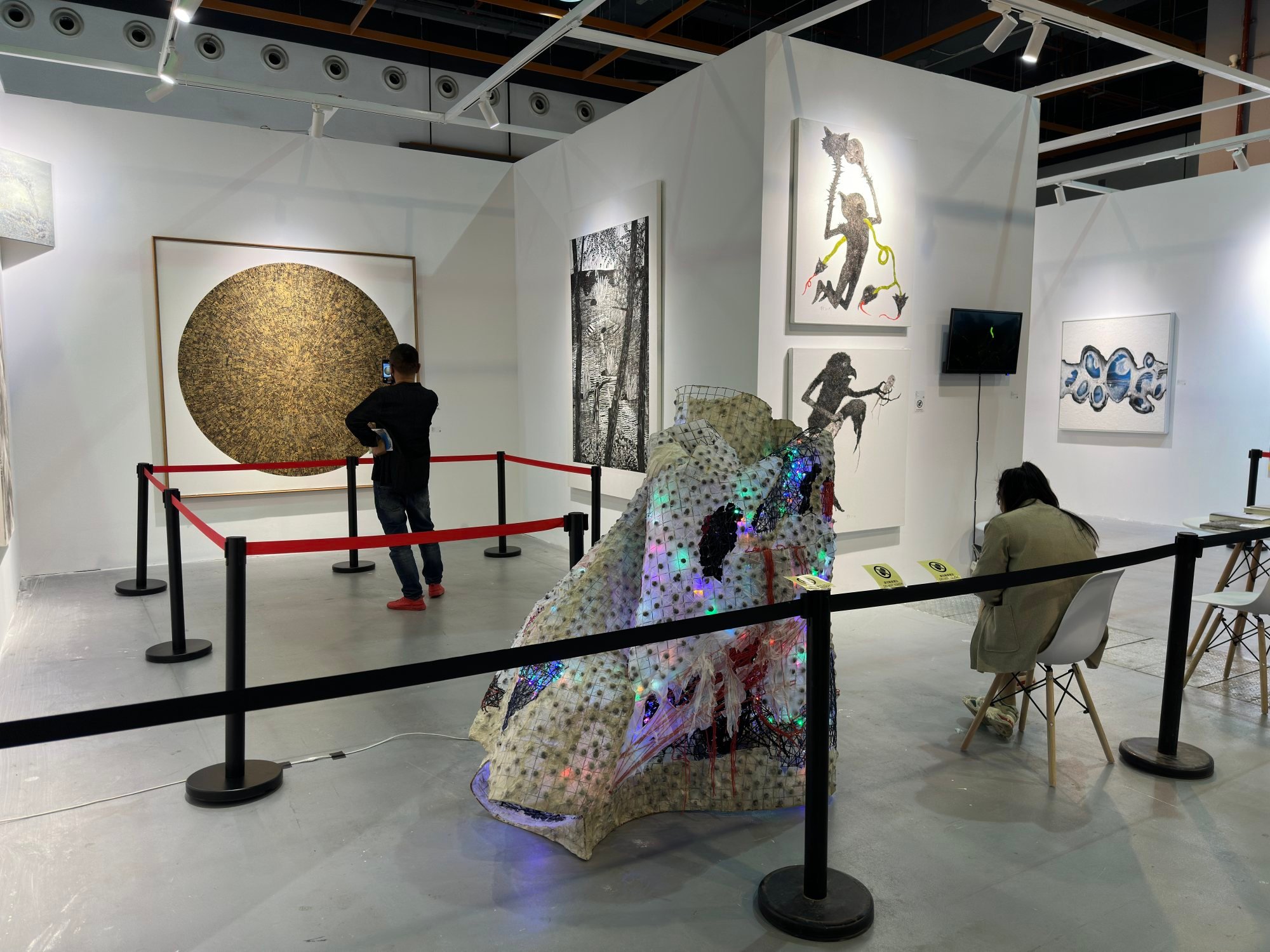
Guangzhou’s potential as contemporary art hub in doubt as new Moordn Art Fair draws crowds but generates few sales
- Created to tap Chinese economic powerhouse Guangzhou’s potential as a big art market, Moordn Art Fair drew lots of visitors in its first in-person iteration
- Big-name galleries were also present, but their slow sales showed the limitations of the city’s nascent market and left some gallerists unsure if they’ll return
As a metropolis with 18 million people and one of China’s economic powerhouses, Guangzhou is being eyed by art galleries for its potential as the next big art market.
One sign of the strong interest in contemporary art in the southern Chinese city was the crowd that filed into the Nan Fung International Convention and Exhibition Center for the opening of the Moordn Art Fair on December 8.
“Guangzhou actually has all the infrastructure needed for a contemporary art [hub], including an art academy, the Guangdong Art Museum and an auction house.
“All these hint at a great potential, and the local audience are studious and well-mannered,” says Sophia Wang of Beijing’s Pifo Gallery, who brought work by eight artists to sell at the fair, the prices for which ranged from 40,000 yuan (US$5,600) to 900,000 yuan.
This was not the first Moordn Art Fair. It was first staged online in 2022, when Covid-19 pandemic social-distancing precautions were still in effect.

Moordn is a four-year-old art-industry consulting and marketing business whose quirky spelling comes from its Chinese name – a pun on the words for magic lantern and modern, which are homophones in Mandarin.
The company’s founder Tim Lee, a graduate of the Academy of Art in Guangzhou, set up a collectors’ club in collaboration with high-end lifestyle brand K11 in Guangzhou in 2020, followed by an art space in the nearby city of Foshan in 2022.

Lee says the art fair is his latest venture to engage with the thriving art scene in China’s Greater Bay Area, which comprises nine cities in southern China plus Hong Kong and Macau.
But does the Greater Bay Area need another art fair?
We believe that the art market in Guangdong will develop rapidly
Guangzhou itself isn’t without art fairs, but their impact remains limited.
The Guangzhou International Art Fair focuses primarily on traditional Lingnan-style ink paintings, while the fourth staging of the Guangzhou Contemporary Art Fair was reduced to just 10 exhibitors this year, compared to over 30 galleries before.
Lee says the time is ripe for an art fair that caters to local collectors’ tastes, and that his experience in organising gallery and artist studio visits for members of his collectors’ club gives Moordn Art Fair a competitive edge.
First solo exhibition in Hong Kong of ‘rainbow artist’ Ay-O’s work
Forty-five galleries took part in the fair, which ended on December 11. They ranged from established names like Tang Contemporary Art and Galerie Urs Meile to emerging galleries from beyond the major art hubs of Beijing and Shanghai.
The works exhibited by the galleries were largely at the affordable end of the spectrum, with prices starting from thousands of yuan. Arario Gallery and Tang Contemporary were exceptions, both offering works in the 1 million to 6 million yuan range.
Kenna Xu’s eponymous art gallery attended the fair with works by artists from America, Africa and elsewhere at prices ranging from 45,000 yuan to 800,000 yuan. The Shenzhen gallerist says he was drawn to the high quality of the fair and the potential of Guangzhou.

“There is not only young but also old money here [compared to Shenzhen],” he says.
Despite the potential of Guangzhou’s art market it remains small, a fact which limited the success of the fair.
Representatives of many of the galleries the Post spoke to, including Arario, Tokyo Gallery + BTAP and Tang Contemporary, said they had not closed any deals at the time of writing.
Christie’s Hong Kong auctions see strong demand for Asian masterpieces
Galerie Urs Meile sold an abstract painting by Zhang Xuerui for 300,000 yuan, as well as a few other paintings. The gallery said it sold to existing clients rather than new ones at the fair.
So will galleries come back next year?
“We believe that the art market in Guangdong will develop rapidly and therefore we are willing to come back with works more attuned to the local taste,” said Zhang Yong, the director of Arario Gallery in Shanghai.
But others are not so sure.
“We will focus on fairs outside Guangdong,” said Aaron Chen, the owner of ATTN Gallery, a Guangzhou gallery with a second space in Guizhou province, southwest China. There simply wasn’t any “home advantage” that warranted his gallery’s return, he said.
